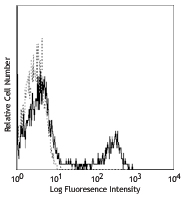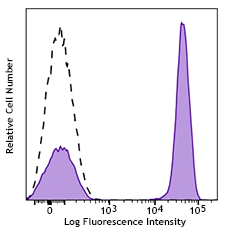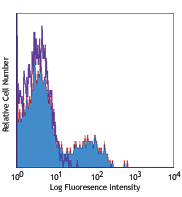- Regulatory Status
- RUO
- Other Names
- VILIP-1, CCL2 (MCP-1), sTREM-2, BDNF, TGF-β1 (Free Active Form), VEGF, IL-6, sTREM-1, β-NGF, IL-18, TNF-α, sRAGE, CX3CL1 (Fractalkine)
- Ave. Rating
- Submit a Review
- Product Citations
- publications
Neuroinflammation is the inflammation of neuronal tissue due to acute brain injury, protein aggregation, infectious processes, or genetically inherited disorders. Glial cells of the central nervous system produce both pro- and anti-inflammatory factors to modulate the progression of this immune response. In the event of neuronal damage, proteins may also be released into the surrounding cerebrospinal fluid. Neuroinflammation contributes to many neurodegenerative conditions, such as Alzheimer's and Parkinson's disease, as well as permeability disruptions of the blood-brain barrier. Accurate measurement of the cytokines, chemokines, growth factors, and neuronal disease biomarkers that underlie the complex process of neuroinflammation is critical to furthering understanding these pathologic disorders.
The LEGENDplex™ Human Neuroinflammation Panel 1 (13-plex) is a bead-based multiplex assay panel, using fluorescence-encoded beads suitable for use on various flow cytometers. It allows for simultaneous quantification of 13 key targets involved in neuroinflammation such as VILIP-1, CCL2 (MCP-1), sTREM-2, BDNF, TGF-β1, VEGF, IL-6, sTREM-1, β-NGF, IL-18, TNF-α, sRAGE, CX3CL1 (Fractalkine). This assay panel provides higher detection sensitivity and broader dynamic range than traditional ELISA methods. The panel has been validated for use on cell culture supernatant, serum, and cerebrospinal fluid.
The LEGENDplex™ Human Neuroinflammation Panel 1 (13-plex) is designed to allow flexible customization within the panel. Please visit www.biolegend.com/legendplex for more information on how to mix and match within the panel.
This assay is for research use only.
Product DetailsKit Contents
- Kit Contents
-
- Setup Beads: PE Beads
- Setup Beads: Raw Beads
- Capture Beads
- Detection Antibody
- Standard Cocktail, Lyophilized
- SA-PE
- Matrix B3, Lyophilized
- Assay Buffer
- Wash Buffer, 20X
- V-bottom Plate
- Plate Sealers
Please note: Lots manufactured before September 2021 may include a different version of the “Matrix B.” There is no change in the protocol. Simply use the Matrix reagent you received as suggested in the current manual.
Product Details
- Verified Reactivity
- Human
- Application
-
Multiplex
Learn more about LEGENDplex™ at biolegend.com/legendplex
Download the LEGENDplex™ software here. - Materials Not Included
-
- Flow Cytometer
- Pipettes and Tips
- Reagent Reservoirs for Multichannel Pipettes
- Polypropylene Microfuge Tubes, in 96-Tube Rack
- Vortex Mixer
- Sonicator
- Aluminum foil
- Absorbent pads
- Plate Shaker
- Centrifuges
- A Vacuum Filtration Unit and a Vacuum Source (if using filter plates)
- Manual
Antigen Details
- Biology Area
- Immunology, Neuroinflammation, Neuroscience
- Molecular Family
- Cytokines/Chemokines, Growth Factors
- Gene ID
- 7447 View all products for this Gene ID 6347 View all products for this Gene ID 54209 View all products for this Gene ID 627 View all products for this Gene ID 7040 View all products for this Gene ID 7422 View all products for this Gene ID 3569 View all products for this Gene ID 54210 View all products for this Gene ID 4803 View all products for this Gene ID 3606 View all products for this Gene ID 7124 View all products for this Gene ID 177 View all products for this Gene ID 6376 View all products for this Gene ID
Related Pages & Pathways
Pages
Related FAQs
- If I don't have a vacuum, how do I remove the liquid from my plate?
-
If you do not have a vacuum, the assay should be run in a V-bottom plate. After centrifugation using a swinging-bucket rotor with a plate adaptor, you can remove the liquid by flicking the plate quickly, dumping the contents into a sink, and patting it dry carefully on a stack of clean paper towels without losing the beads. Alternatively, you can remove the liquid by using a pipette.
- Should I perform the assay with the filter plates or with V-bottom plates?
-
Filter plates or V-bottom plates have been included in some kits for your convenience. A vacuum filtration unit is required to work with the filter plates. However, if you don’t have access to a vacuum manifold or if you prefer, then you can use the V-bottom plates and follow the recommended assay protocols for the type of plates you choose. All plates should be made from low binding polypropylene. Polystyrene ELISA or cell culture plates should not be used.
- After I finish the staining process, how long can I wait before reading my LEGENDplex™ samples?
-
The samples can be kept overnight at 4°C while being protected from exposure to light and be read the next day. There may be a decrease in signal, but overall, the assay results should not be affected. Storing the samples for extended periods of time is not recommended, as it could lead to further reductions in signal.
- What is the shelf life of LEGENDplex™ kits?
-
LEGENDplex™ kits are guaranteed for 6 months from the date of receipt, but may have a shelf life of up to 2 years from the date of manufacture.
- Is special software required for data analysis?
-
Typically flow cytometers generate output files in FCS format (e.g. FCS 2.0, 3.0, or 3.1) and in some cases in list mode file format (LMD). Other software may be available to analyze FCS files. Data generated using LEGENDplex™ kits can be analyzed using the freely available LEGENDplex™ data analysis software. Please check our website for the most updated versions of the software.
Customers Also Purchased

 Login / Register
Login / Register 











Follow Us